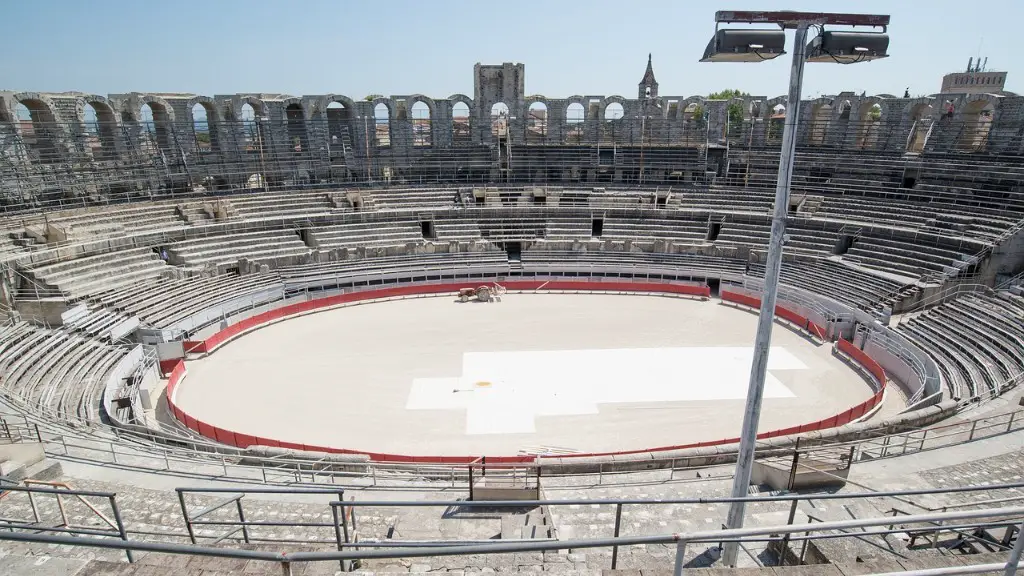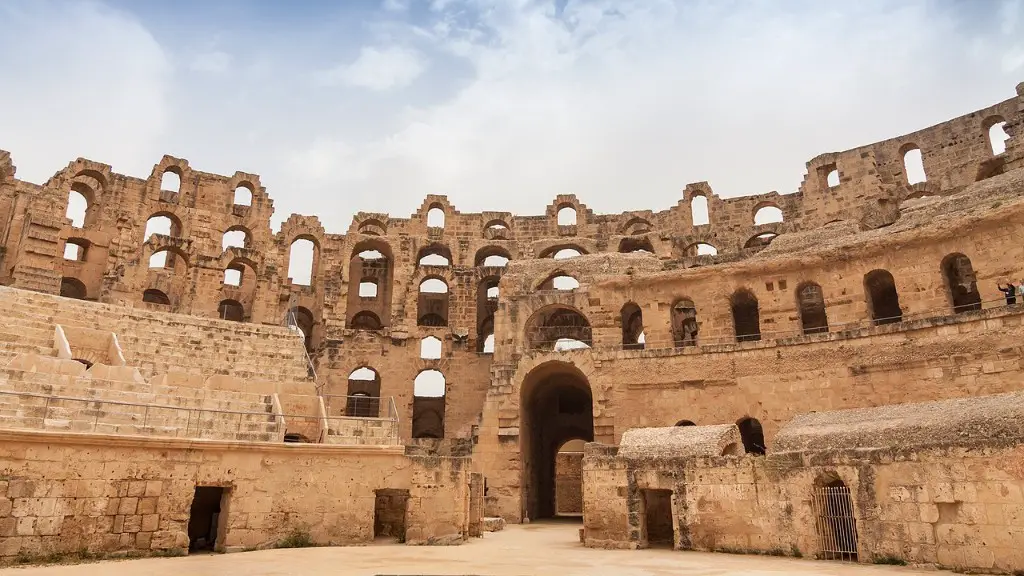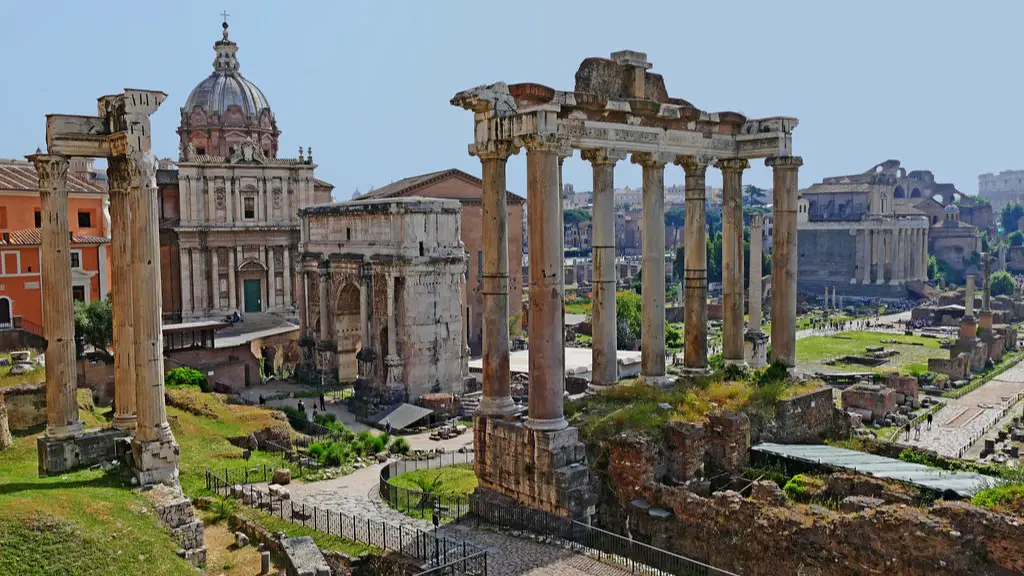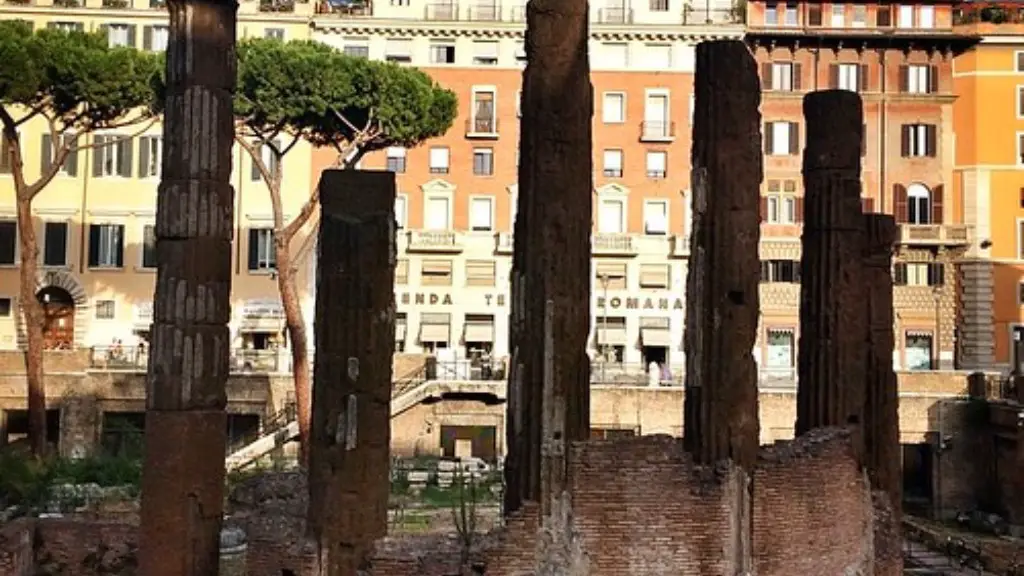The Location of Ancient Rome
Ancient Rome was located in the Mediterranean Sea and it stretched across the Italian Peninsula. It was an incredibly powerful and influential city, covering over a million square miles at its peak. Its location in the center of the Mediterranean gave it access to the neighboring regions, which helped Rome increase its power and wealth. Ancient Rome was also well-positioned to take advantage of the many waterways that ran through the region, which allowed for easier trade and transportation.
Climate of Ancient Rome
The climate of Ancient Rome was predominantly Mediterranean, characterized by hot and dry summers and cooler winters. The region experienced periods of drought and rain, but the Mediterranean climate was generally consistent throughout the year. The Mediterranean climate was especially beneficial for the people of Ancient Rome because it allowed for the successful growth and production of crops.
Geology of Ancient Rome
Ancient Rome was founded upon several volcanic hills, the most important of which was the Palatine Hill. The city was situated on a plain formed by the Tiber River. The region was composed of many different types of land, including plenty of rolling hills and flat plains. At its peak, Ancient Rome was bordered by miles of defense walls and fortifications, which helped protect the city from invading forces.
Geography of Ancient Rome
Ancient Rome’s geography was dominated by the Tiber River. This river was incredibly important to the city, as it was both an important form of transportation and a source of fresh drinking water. Ancient Rome’s geography was defined by its considerable road network, which connected the city to the surrounding areas. The city was also surrounded by mountains, which provided protection from attack.
Economy of Ancient Rome
Ancient Rome was a thriving economic center. Its strategic location enabled it to become a hub of trade and commerce, with goods from all around the Mediterranean being brought to the city. Its access to waterways and the sea allowed for faster transportation of goods and increased Roman trade. The agricultural capabilities of the region helped to fuel Ancient Rome’s economy and make it hugely successful.
History of Ancient Rome
The geography of Ancient Rome was a key factor in its development. Rome’s location allowed it to become a powerful empire and was an integral part of its success. In addition to its advantageous environment, Rome’s influential and expansive road network, combined with its advanced agricultural capabilities, allowed it to become an incredibly influential and prosperous city.
Architecture of Ancient Rome
The landscape of Ancient Rome influenced its architecture. The city’s impressive fortifications, roads, and monuments were shaped by the surrounding geography and topography. The city center was dominated by several famous structures such as the Colosseum and the Pantheon, which were constructed from materials from the nearby hills and mountains.
Strategic Importance of Ancient Rome’s Geography
The geography of Ancient Rome was an important strategy to help protect the city from invasion. Rome was situated in a very centralized location, making it easier to maintain control over its resources and defend against incoming threats. This strategic positioning of the city made it much harder for its enemies to launch successful attacks.
Religion and Geography of Ancient Rome
The geology and geography of Ancient Rome played an important role in the development of its religion. Many of Rome’s gods and goddesses were associated with specific features of the land, such as the fertility god Liber and goddess Ceres, who were connected to the area’s agricultural capabilities. The religion of Ancient Rome was also strongly intertwined with its location, as different parts of the city were considered sacred and often had their own temples dedicated to the gods.
Cultural Impact of Ancient Rome’s Geography
The geography of Ancient Rome played an important role in its culture. The city was surrounded by stunning landscapes, majestic mountains, and plenty of rolling hills, which helped form a unique and vibrant culture. Rome’s access to both land and sea trade allowed for a greater variety of cultural influences and helped to diversify the city. Geography also played a large role in the architecture of Ancient Rome, which is now considered one of the most impressive in the world.
The Political Significance of Ancient Rome’s Geography
The geography of Ancient Rome had a profound political impact. The centralized location of Rome allowed the city to expand its power and control over the Mediterranean region in an efficient and effective manner. Its political domination of the region was greatly aided by its access to trade, transportation, and other resources. Rome’s strategic position also allowed for the formation of a powerful army, ensuring its long-term success.
The Legacy of Ancient Rome’s Geography
The geography of Ancient Rome has long-lasting implications. Today, the city is a popular tourist destination and its impressive landmarks are recognized around the world. The city’s impressive layout has also been replicated in many modern cities, with Rome’s efficient infrastructure and design influencing many urban planning projects today. The geography of Ancient Rome is still appreciated and respected to this day.



